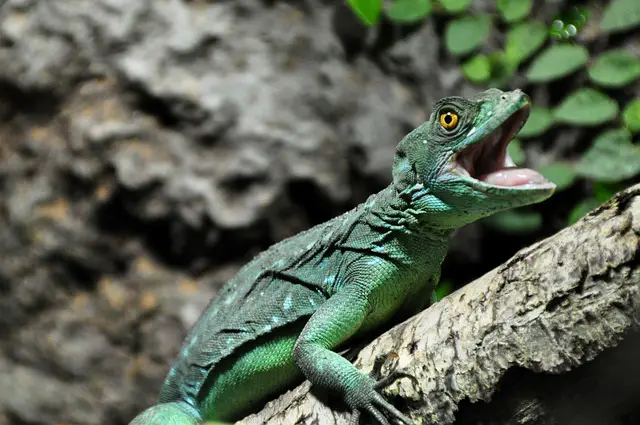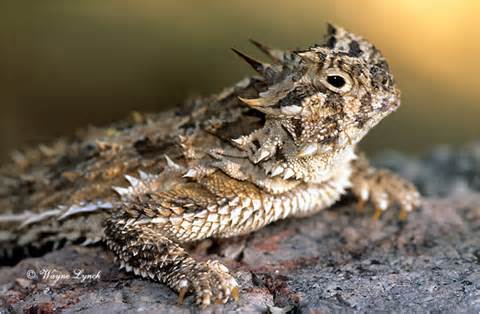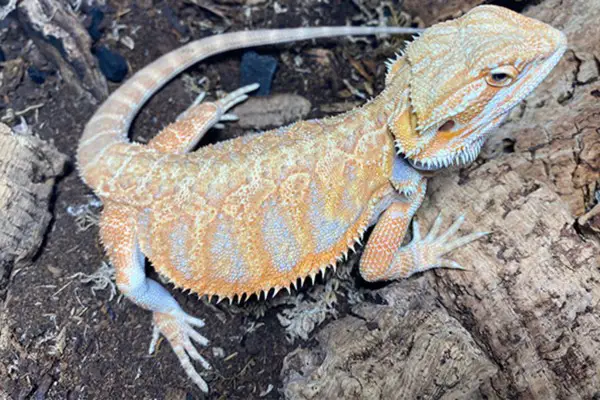The frilled neck lizard (Chlamydosaurus kingii) is a large lizard that seems quite threatening when it expands the frill like some dinosaurs used to do. The lizard has evolved to scare off predators in this unique fashion. Yet another unique feature about this lizard is that it is capable to run extremely fast on its hind legs. It’s so fast that can see the legs of a running lizard only on a rerun.
Frilled Neck Lizard Facts
Anatomy
- Adult lizards grow about 85 cm (2.79 ft) in length.
- Frilled neck lizards are mainly recognized by their brown to grey body.
- The lizard earns its name because of two large folded skins that are set at the lizard’s shoulders. These frills are usually activated when the lizard feels threatened.
- Frills around the lizard’s neck make it rather more frightening (when it expands).
- Besides exposing frills, frilled neck lizards employ many other techniques to scare off predators. They are thought to show bright pink lining, raising its body, or sometimes holding the tail above its body.
- They can climb up the nearest tree to escape potential predator.
- Males are larger than females. They are also different in physical appearance.
- Frilled lizards have an amazing ability to camouflage its body into the trees.
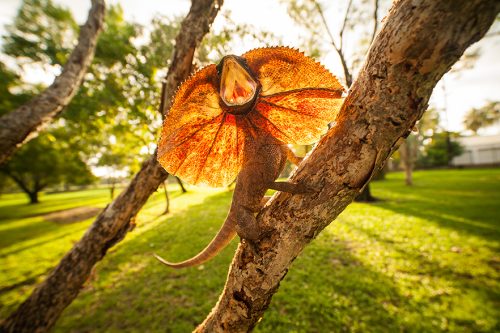
Range & Habitat
- Frilled neck lizards are likely to survive in woodlands and shrubby understorey. The lizard spends most of its time into the trees.
- Frilled lizards occur in the hot tropics of northern and northwestern Australia including as far as Papua New Guinea.
- It is less likely to survive in the deserts of Australia.
Behavior
- The frilled neck lizard basks in the sun for as long as 30 minutes. They will typically avoid the hottest hours of the day.
- The basking mostly occurs in morning or in early noon.
- When they bask they stand motionless at the bottom of the trees or under the forest canopy. By doing so, lizards make sure that they receive maximum sunlight.
- It is an arboreal species as the lizard spends hours into the trees.
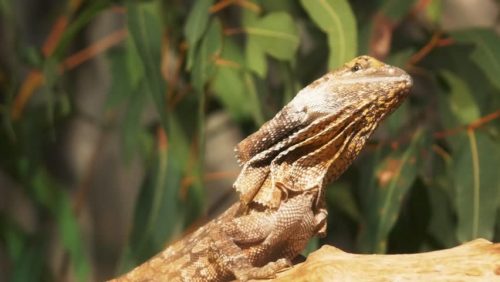
Feeding Ecology & Diet
- Frilled neck lizards typically consume small invertebrates (including spiders), cicadas, mice, termites, beetles, small mammals, insects, and reptiles.
- They would like to feed on butterfly larvae and moths. Insects make up much of the lizard’s diet.
Reproductive Biology
- The breeding season begins in September and ends in October. The female lays 8 to as many as 25 eggs.
- From November to February the female lays eggs in a nest and the nest is 5 – 20 cm beneath the ground.
- The incubation period lasts 60 – 90 days.
- During breeding season, adult males fight for the females.
- Hatchlings will display gaping mouth when they are threatened.
- The hatching period lasts 90 – 120 days.
- Predators of frilled neck lizard include dingoes, quolls, owls, snakes, large lizards, and eagles.

